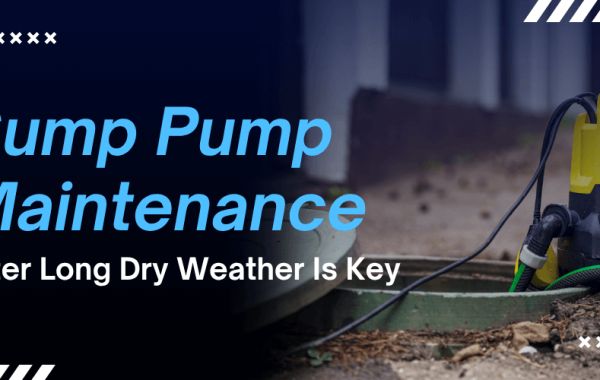Have you enjoyed a long stretch of dry weather without thinking twice about your sump pump? That quiet spell might be setting you up for problems. When pumps sit idle, parts can stiffen, seals crack, and debris builds up unnoticed. That's why timely sump pump maintenance matters, especially before the rain returns. Keep reading to find out how to keep your system ready when needed.
What Happens to a Sump Pump During Extended Dry Spells?
A sump pump may sit unused for weeks or even months during extended dry periods. Although this downtime seems harmless, it can cause several performance issues later, such as:
- Float switch failure: Stuck or corroded switches may stop the pump from activating when water returns.
- Dried seals and gaskets: Inactive seals can crack or shrink, which reduces pump efficiency.
- Sediment hardening: Debris in the pit may settle and clog the pump once it restarts.
- Motor strain: A dry start can cause overheating, shortening the pump's lifespan.
Practice routine sump pump maintenance even during dry weather to avoid these issues. Regular checks ensure your system properly responds when storms return.
The Risk of Not Performing Sump Pump Maintenance Before Rain Returns
Many homeowners forget to check their sump pumps when dry weather stretches on. However, that neglect can quickly damage water once heavy rain returns. Delaying sump pump maintenance causes the following concerns:
- Clogged intakes and filters: Dirt and sediment settle during dry periods, reducing flow and forcing the pump to work harder.
- Stuck or unresponsive switches: Infrequent use can cause float switches to stick or fail, preventing the pump from activating during heavy rainfall.
- Electrical issues: Worn wires or faulty connections may go undetected until the system is under pressure.
- Water damage risk: A non-functional pump can't keep up when storms hit, putting basements and lower levels at serious risk of flooding.
Thus, it's wise to perform sump pump maintenance before rainy weather returns. It also prevents unexpected breakdowns and protects your home from costly water damage.
Key Sump Pump Maintenance Steps After Dry Weather
Once the dry season ends, preparing your sump pump for increased rainfall is essential. The following steps help restore proper function and prevent unexpected failure:
- Clear debris from the pit: Dirt, leaves, and other debris can settle in the pit during dry weather and block water flow once the system activates.
- Test the float switch: Slowly pour water into the pit to confirm the float rises and the pump switches on correctly.
- Inspect the discharge line: Ensure the line is clear, intact, and positioned to carry water away from your home's foundation.
- Check the power supply: Plug the cord in securely and protect it from moisture. If your system includes a battery backup, test or replace the battery as needed.
Completing these sump pump maintenance steps ensures your system works efficiently when wet weather returns.
When to Schedule Professional Sump Pump Maintenance
Although homeowners can manage minor maintenance, professional help is necessary for more complex issues. Consider scheduling sump pump maintenance during the following times:
- Before heavy rain seasons: Schedule service before spring or fall rains to avoid last-minute surprises.
- After long dry periods, Inactivity can cause mechanical parts to stiffen or corrode. A professional can thoroughly test the system.
- If the pump is several years old, Older systems require more thorough checks to stay reliable.
- Warning signs appear: Strange sounds such as grinding, rattling, or humming suggest the need for professional sump pump maintenance.
- A technician ensures the primary and backup pumps work together correctly when using backup systems.
Scheduling sump pump maintenance immediately helps prevent water damage and protects your basement year-round.
Don't Wait for the Storm!
Just because your sump pump stayed silent during a dry spell doesn't mean it's ready to work when rain returns. That time off may have allowed seals to dry out, debris to settle, or parts to seize, making failure more likely when you finally need it. Instead of waiting for the first heavy storm to test it, take action now. Hence, regular sump pump maintenance helps you catch issues early and avoid costly water damage later. For the best results, schedule professional sump pump maintenance and give your system the attention it needs before the next downpour hits.







